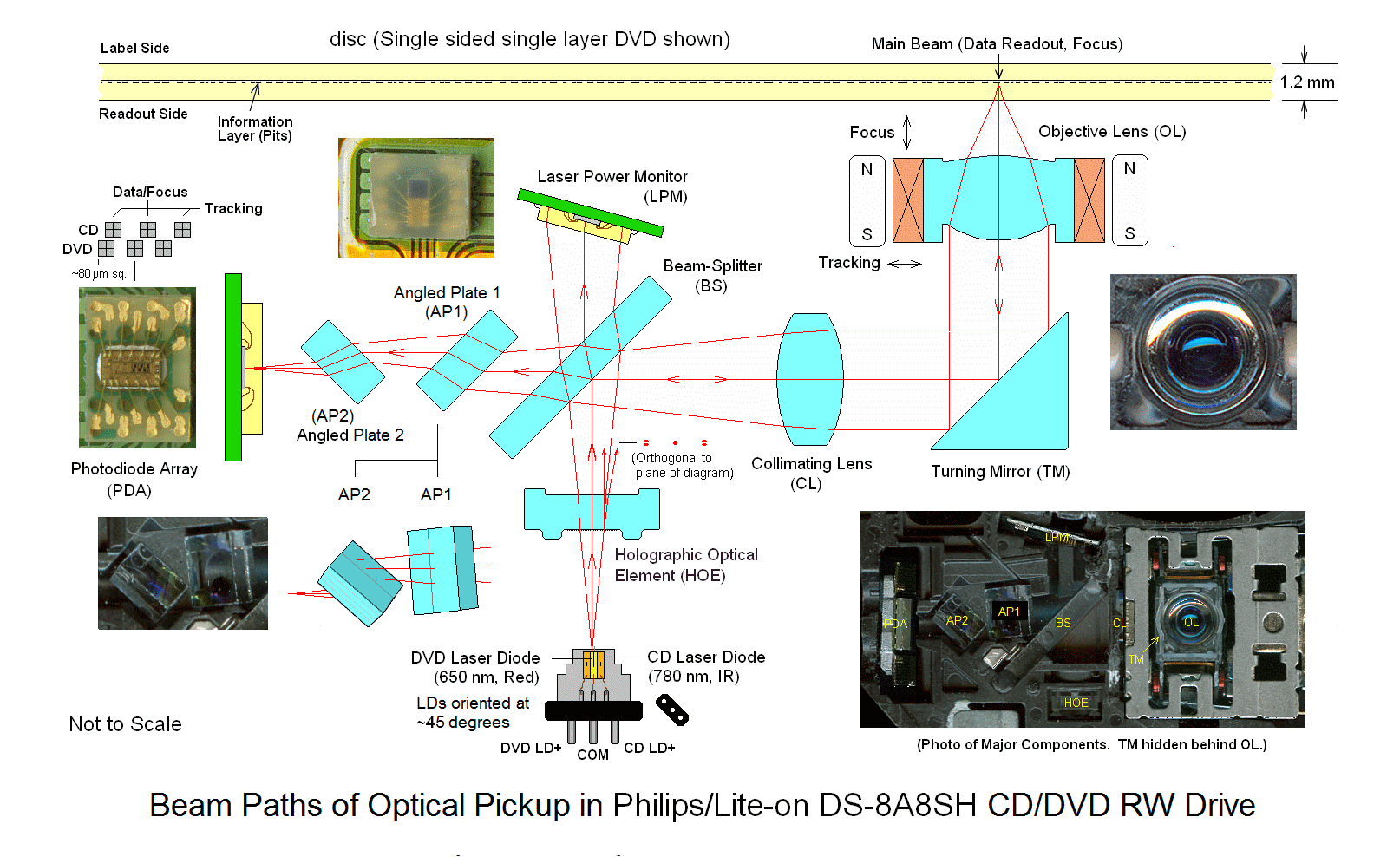SEPEHR100
New Member
Recently, I opened up a DVD writer drive for curiosity to see its insides and mechanisms. While the drive casing was open, I plugged SATA power and signal cables to it to see it in action (opening and closing the tray while the laser/lens unit is trying to check if a valid disk is inserted or the first few seconds that the lens unit moves on the rail with the spindle spinning). Although I knew the visible laser beam is bad for the eyes if viewed directly, but I didn't know anything about "Invisible laser radiation". Sounds like they use not just on laser diode in the drives.
Now besides a little worry about if I damaged my eyes (though I never looked at the lens and laser, just viewed it from the rear), I wonder where does the invisible beam come from and what's the purpose of it? Do they come from those rounded rectangular holes that I depicted in the album below? What are they?
I looked for any IR beams with the use of my phone camera, but I couldn't find anything.
Now besides a little worry about if I damaged my eyes (though I never looked at the lens and laser, just viewed it from the rear), I wonder where does the invisible beam come from and what's the purpose of it? Do they come from those rounded rectangular holes that I depicted in the album below? What are they?
I looked for any IR beams with the use of my phone camera, but I couldn't find anything.









